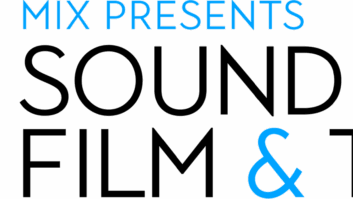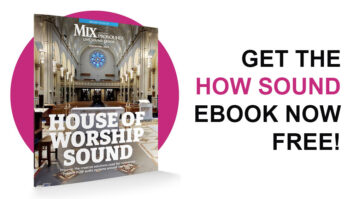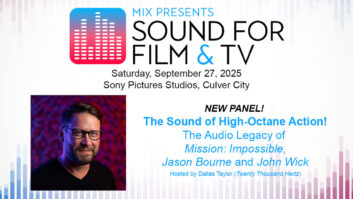New microphone designs don’t appear very often. If one looks at the subcategory of multichannel mic systems, such as the “Decca tree,” the Calrec Soundfield, the SPL Atmos, etc., the number of new ideas that have resulted in working products is even smaller. However, there is now a new member in the multichannel mic systems club-the Holophone(tm), developed and patented by Mike Godfrey of Rising Sun Productions Limited in Toronto.
Godfrey was first exposed to binaural sound in the early 1990s while listening to Pink Floyd’s The Final Cut album on headphones. The experience of hearing sounds that seemed to emanate from behind the listener-even when listening on stereo headphones-made quite an impression on Godfrey. While a student at The Recording Workshop (Chillicothe, ohio), he began seriously exploring dummy head binaural recording but was dismayed that the effect could only be reproduced on headphones.
Returning to Canada, Godfrey founded a sound design studio, Rising Sun Productions Limited. Still interested in multidimensional sound recording, he began experimenting with the idea of applying a dummy head-style approach to surround sound. After developing several rough models, Godfrey applied for a patent and built his first prototype in late 1996. Interest in his work spread, and eventually Canada’s National Research Council joined in a collaborative research agreement to “fine-tune” the system and create a prototype that was compatible with industry requirements.
The culmination of this effort led to the Holophone system, which has two components. There’s an ellipsoidal 7.5×5.7-inch Fiberglass epoxy enclosure fitted with seven omnidirectional condenser capsules (from Sennheiser, DPA, Schoeps or Sony, depending on user preferences), positioned as front/left/right/left surround/right surround/top and a low-frequency mic located inside the housing. The other component is a dual-rackspace, 7-channel preamplifier control module, Model PCM-7.
one key requirement of the system is a 7-channel recorder, but fortunately, 8-channel modular digital multitracks (Tascam DTRS or Alesis ADAT format) provide a readily accessible means of storing the mic signals coming from the PCM-7 units. The Holophone is typically used in a hard-wired configuration, either handheld or boom-mounted or used in a fixed placement (such as in a concert hall for classical recording).
Alternatively, the mic outputs can be connected to seven individual wireless transmitters around a belt worn by the operator holding the mic or with the transmitters placed in a pouch and mounted to a fish pole/boom for film/video production on a soundstage or location.
The PCM-7 control module allows for manipulating the seven signals, and offers front-panel gain trim for each channel; a solo-style channel select for headphone monitoring; a cluster of LEDs displaying a representation of the physical location of the mics; and a 10-turn rotary pot for mixing any amount of the top-channel signal with the remaining channels.
once the Holophone tracks are recorded, they can either be used as is, or brought into mixes as 5.1 or 6.1 stems and encoded for storage to DVD, DVD-A, IMAX, SDDS, Dolby Digital, etc. Holophone-recorded material would also be suited for playback as seven discrete tracks (from DAW or MDM) in special-venue expositions, planetarium or interactive motion “thrill ride”-type playback environments. In such cases, an MDM’s “unused” eighth track could be used for SMPTE timecode for lighting control, or for the pulses that trigger slide projectors in multi-image presentations.
Even before the product’s release, Holophone has created some excitement among music and film engineers. Prerelease tests of the system included recording some of the crowd ambiences used in oliver Stone’s Any Given Sunday, a Monday Night Football Dallas Cowboys/New York Giants HDTV broadcast from last october, and a live recording of “one Love,” the Bob Marley tribute concert slated for DVD release on Island Records.
The Holophone’s simple “point-and-shoot” approach and its applicability in a wide variety of audio situations make this a useful, creative addition to the toy box of any creative recordist. The system is priced at less than $10,000 and begins shipping this month.
Rising Sun Productions Limited, 258 Adelaide St. East, Suite 200, Toronto, ontario, Canada M5A 1N1; 416/362-7790; fax 416/362-7780; www.holophone.com.






